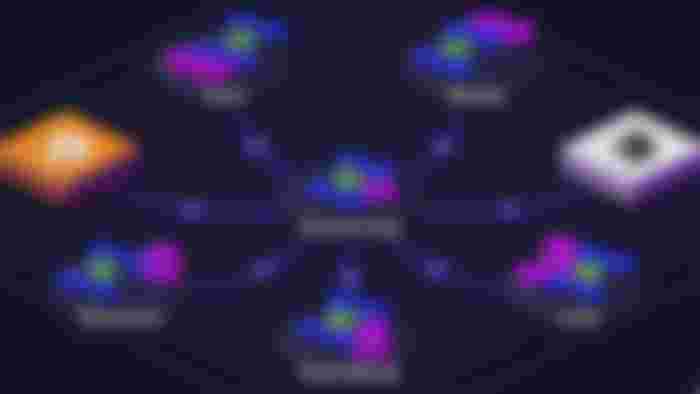
To project and make outright investment choices, nothing works better than gaging success alongside critics. Healthy or not, let's kick into it
Maybe you've stumbled on it once or maybe not. But whatever the case may be, Cosmos (ATOM) has become one of the potential termed crypto projects on air, and I took some time out to explore its build up to attain conclusions on what makes it so special.
Like I've always said, the long term value of the cryptocurrency industry will not be dependent on a single maximistic project, rather, it will be a collective effort, whereas value is derived from numerous protocols. Cosmos tends to understand the concept where there's more value in seamlessly connecting, rather than being resistive to interoperability.
Cosmos builds a bridge for cross-chain data sharing without central watchdogs. The ecosystem was founded in 2014 by a computer scientist Jae Kwon, former CEO of Cosmos. Cosmos sees itself as the Internet of Blockchain. It's designed to allow blockchains to seamlessly communicate with each other in the ecosystem. Cosmos uses open source tools like tendermint, Cosmos SDK and IBC, which enables people to build custom, secure, scalable and interoperable blockchain applications at ease. With tendermint, the ecosystem embodies the workload of building dapps from the scratch, as though it is designed to handle networking and consensus layers of a blockchain, placing it into a generic engine while still giving rights to developers to decide the key set ups of the application.

The Cosmos ecosystem generally has 3 important layers, Applications layer where developers decide the transition and function of the chain, The hubs which aids cross-chain communication and the consensus where agreements are made on the chain. The three layers are incorporated with the tendermint tool. The Cosmos ecosystem is able to bridge both Proof-of-stake and Proof-of-work networks. The Tendermint BFT (byzantine fault tolerant) algorithm allows networks to reach a consensus between all the blockchains in the Cosmos network, while seamlessly connected through the IBC protocol. Using the ABCI which stands for application blockchain interface, separate blockchains can communicate with the Tendermint core, giving room for developers to build DApps on the networks to their respective needs. As mentioned before, this places Cosmos on certain highs, as though it reduces the stress that comes from developing DApps. Cosmos further uses peg zones to be able to bridge PoW networks irrespective of being a PoS itself. However, another interesting part of the Cosmos ecosystem is that, with some anticipated Interchain Security feature, ATOM will soon be securing many chains, in exchange for additional staking rewards, and this leads us to ATOM, the network token.

What about ATOM?
ATOM is the native token of the Cosmos ecosystem. Holders of ATOM can earn incentives by staking them. To earn rewards, a user has to pool his tokens over a period of time, then after the wait period is over, stakers get back their tokens with incentives based on the number of tokens pooled. It would be advisable to note that the network penalizes unjust nodes on the operating, so users delegating to validators are advised to diversify delegations to curb the risks. Speaking of validators, to become a validator, participants need to stake their way up to the top 100 ATOM stakers to be able to run validators nodes. Atom tokens enable holders to secure the network and contribute to the governance of the Cosmos hub. Atom token holders can also vote on proposals and make decisions on the future of the network. However, there's a bit of a drag back which ATOM as a token could face.
ATOM token stakers earn rewards based on the number of tokens pooled, the more token a participant stakes, the higher his rewards. The network is designed to keep producing tokens. The ATOM token has no max supply, as the network expands, even with more room for participants, not every one would want to take the risk of staking tokens to be a validator or delegate to others. Some people just want to buy and hold tokens and hope to see gains on their investments as the project emerges. In the case of Cosmos, the network keeps producing more tokens for stakers and that means increased supply from the pool, and these tokens can easily be sold off in the market. It could however scare off small business investors, who are only interested in holding tokens in their wallet because with more tokens earned from the pool, the market may see sets of selling pressure coming from free tokens and retail investors would be losing on their investments.
So then, the possibility for ATOM (Cosmos native token) seeing great numbers isn't so ideal when many ain't up for the risk that comes with staking and delegations.
However, Cosmos has recently launched its Gravity dex Emeris which is currently only available for desktop use.
This is only for research and educational purposes, not financial advice!



Nah... I am completely in Cosmos...not for cosmos alone because of dapps inside it like Akash... I have delegated to stakers and there is a bonding period of 21 days...meaning I can't sell my tokens imdiately have to unbond it, wait for 21 days then can sell...there are lot of people staking Atoms for incentives and its better to stake then HODL coz over time because of inflation value of Atom token comes down so staking makes sense.
I really believed Atom /cosmos is undervalued and its now getting attension.
Still its DEFI - that gravity dex and osmosis not complete... I don't think I can swap coins other than those in the cosmos ecosystem itself for now...still has to prove its worth in interoperability you know!!
Lets see!! ...Atom is one of my favorites in the crypto projects!!